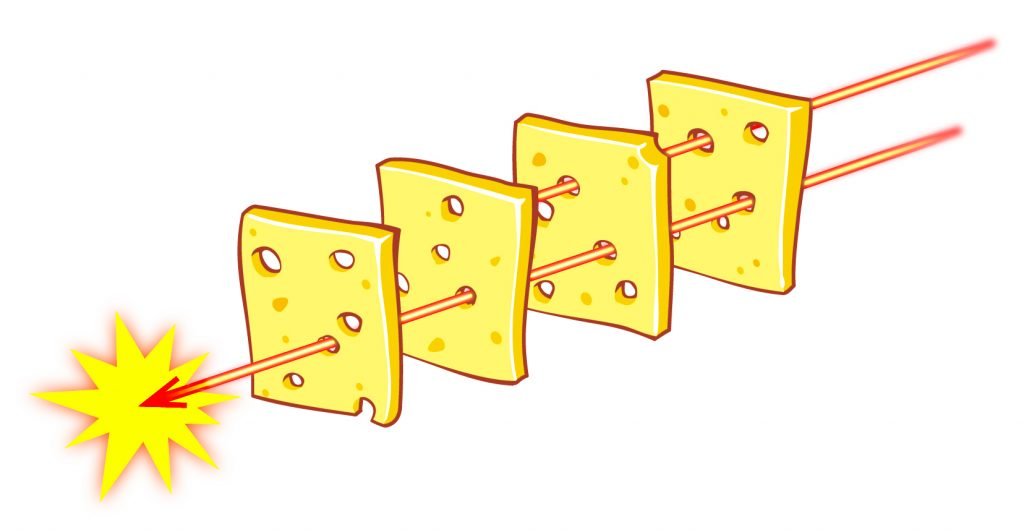
Close

The Swiss Cheese Model is a widely used framework for understanding and analyzing how errors can occur in complex systems, such as healthcare. The model was first proposed by James Reason, a British psychologist, and it has been used in many industries to identify and manage risks.
The Swiss Cheese Model consists of multiple layers of defense, each represented by a slice of Swiss cheese. Each layer has holes (potential weaknesses or errors), and the layers are not perfect, which means that some errors may pass through the holes in one or more layers, resulting in an adverse event.
In the context of healthcare, the Swiss Cheese Model can be used to illustrate how errors can occur at various stages of patient care, from diagnosis to treatment to follow-up. For example, a healthcare provider may make an error in prescribing medication (hole in one slice of cheese), which may not be caught by the pharmacist (hole in another slice of cheese), leading to the patient receiving the wrong medication and suffering harm.

Simply explained, if you look at the above figure , each slice of Swiss cheese has holes in it, but the hole location will not be consistent to allow a straight line to be drawn from the front to the back. There is a barrier preventing further passage through the cheese. One failure (hole) occurs but does not contribute to another failure (Duke, 2014).
The wrong patient is brought into the operating room and prepped. Before the surgery starts, a time out is called and someone realizes that this is not the correct patient for the procedure. This stops further errors from occurring.
It is only when the holes all line up one after another, that a catastrophic event occurs.

Continuing with our surgery example, a patient is brought into the surgery but:
Finally, when the patient is taken to the recovery room, the staff realize that the surgery should have been performed on the left eye.
All of these errors (holes) had to line up perfectly for this adverse event to occur.
In the Swiss cheese model, an organisation’s defenses against failure are modeled as a series of barriers, represented as slices of cheese. The holes in the slices represent weaknesses in individual parts of the system and are continually varying in size and position across the slices. The system produces failures when a hole in each slice momentarily aligns, permitting (in Reason’s words) “a trajectory of accident opportunity”, so that a hazard passes through holes in all of the slices, leading to a failure
Overall, the Swiss Cheese Model is a useful tool for understanding the complex and interconnected nature of healthcare systems and the need for multiple layers of defense to ensure patient safety.
THE Janet A. Brown HEALTHCARE QUALITY HANDBOOK: A PROFESSIONAL RESOURCE AND STUDY GUIDE 29th EDITION